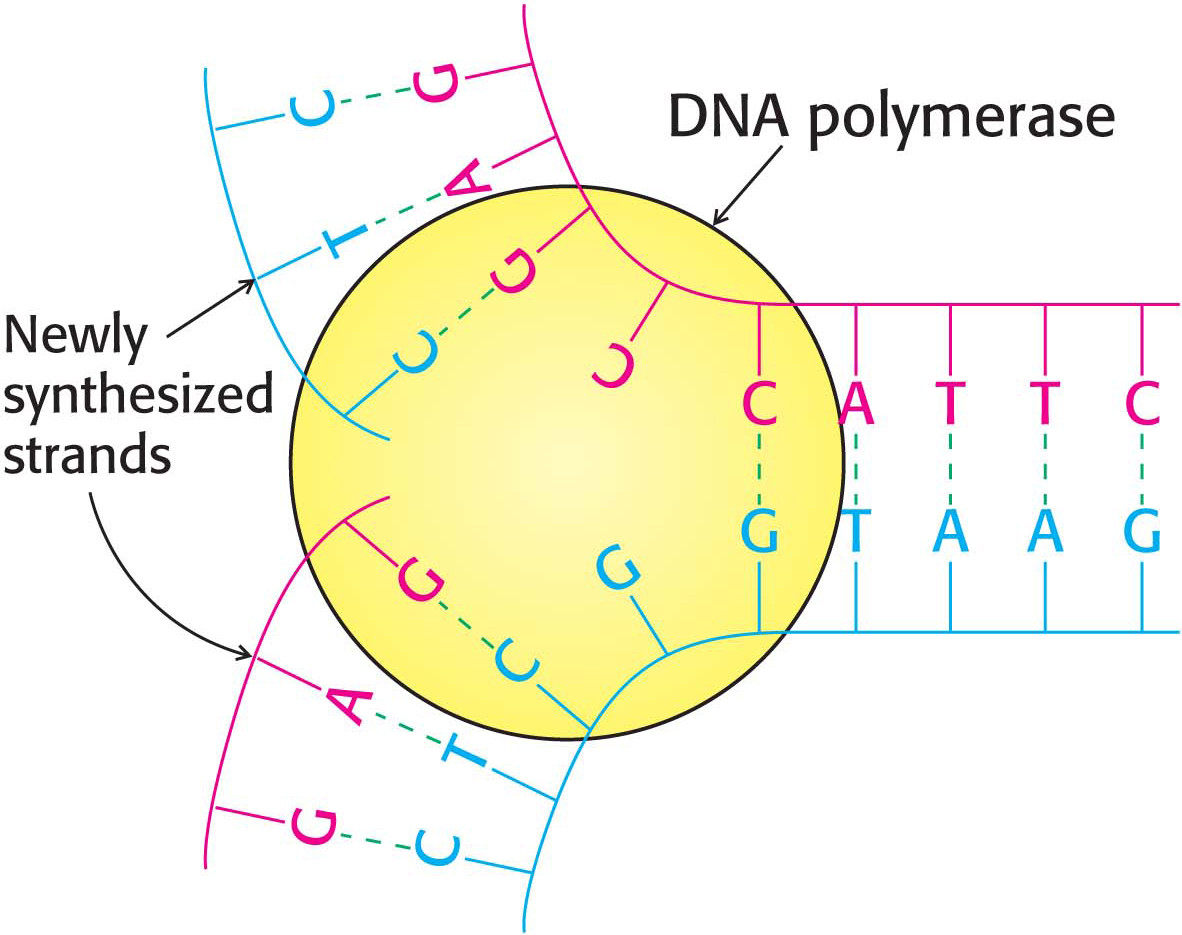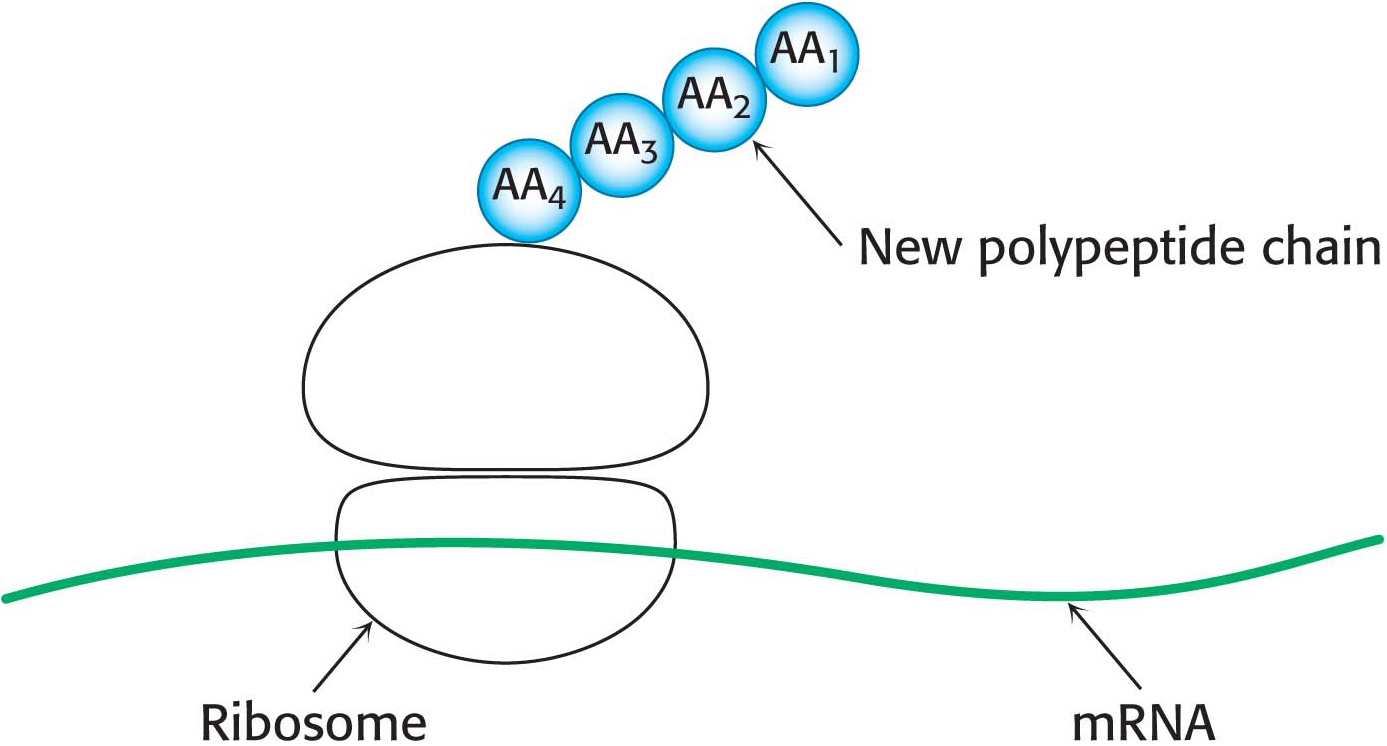
1.3 The Central Dogma Describes the Basic Principles of Biological Information Transfer
✓ 2 List the steps of the central dogma.
Information processing in all cells is quite complex. It increases in complexity as cells become parts of tissues and as tissues become components of organisms. The scheme that underlies information processing at the level of gene expression was first proposed by Francis Crick in 1958.

Crick called this scheme the central dogma: information flows from DNA to RNA and then to protein. Moreover, DNA can be replicated. The basic tenets of this dogma are true, but, as we will see later, this scheme is not as simple as depicted.

DNA constitutes the heritable information—
Genes are useless in and of themselves. The information must be rendered accessible. This accessibility is achieved in the process of transcription through which one form of nucleic acid, DNA, is transcribed into another form, RNA. The enzyme RNA polymerase catalyzes this process (Figure 1.7). Which genes are transcribed, as well as when and where they are transcribed, is crucial to the fate of the cell. For instance, although each cell in a human body has the DNA information that encodes the instructions to make all tissues, this information is parceled out. The genes expressed in the liver are different from those expressed in the muscles and brain. Indeed, it is this selective expression that defines the function of a cell or tissue.
DID YOU KNOW?
As defined in the Oxford english Dictionary, to transcribe means to make a copy of (something) in writing; to copy out from an original; to write (a copy).
A key aspect of the selective expression of genetic information is the transcription of genes into mRNA. The information encoded in mRNA is realized in the process of translation because information is literally translated from one chemical form (nucleic acid) into another (protein). Proteins have been described as the workhorses of the cell, and translation renders the genetic information into a functional form. Translation takes place on large macromolecular complexes called ribosomes, consisting of RNA and protein (Figure 1.8).
Now that you have been introduced to the key biomolecules and have briefly examined the central dogma of information transfer, let us look at the platform—

